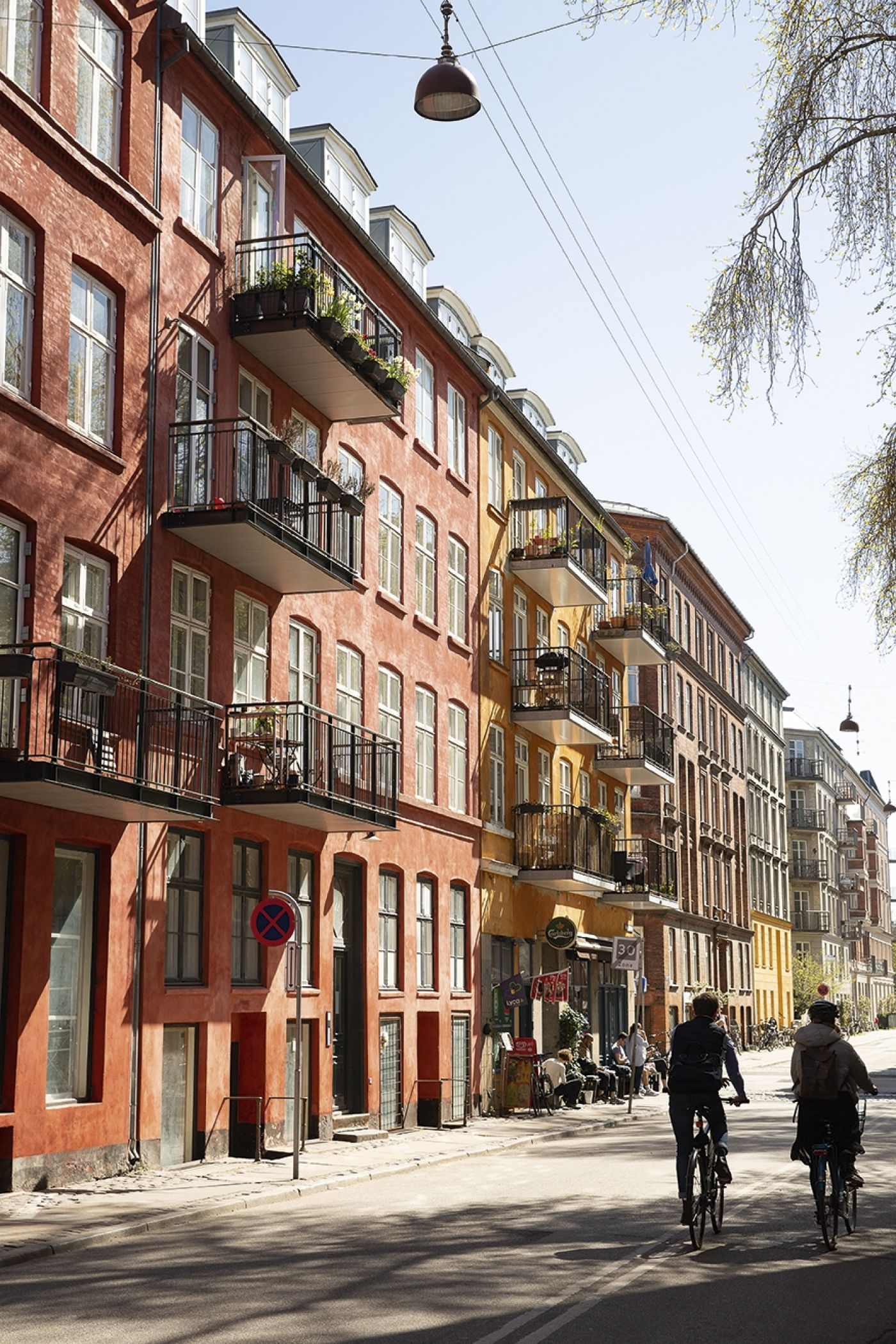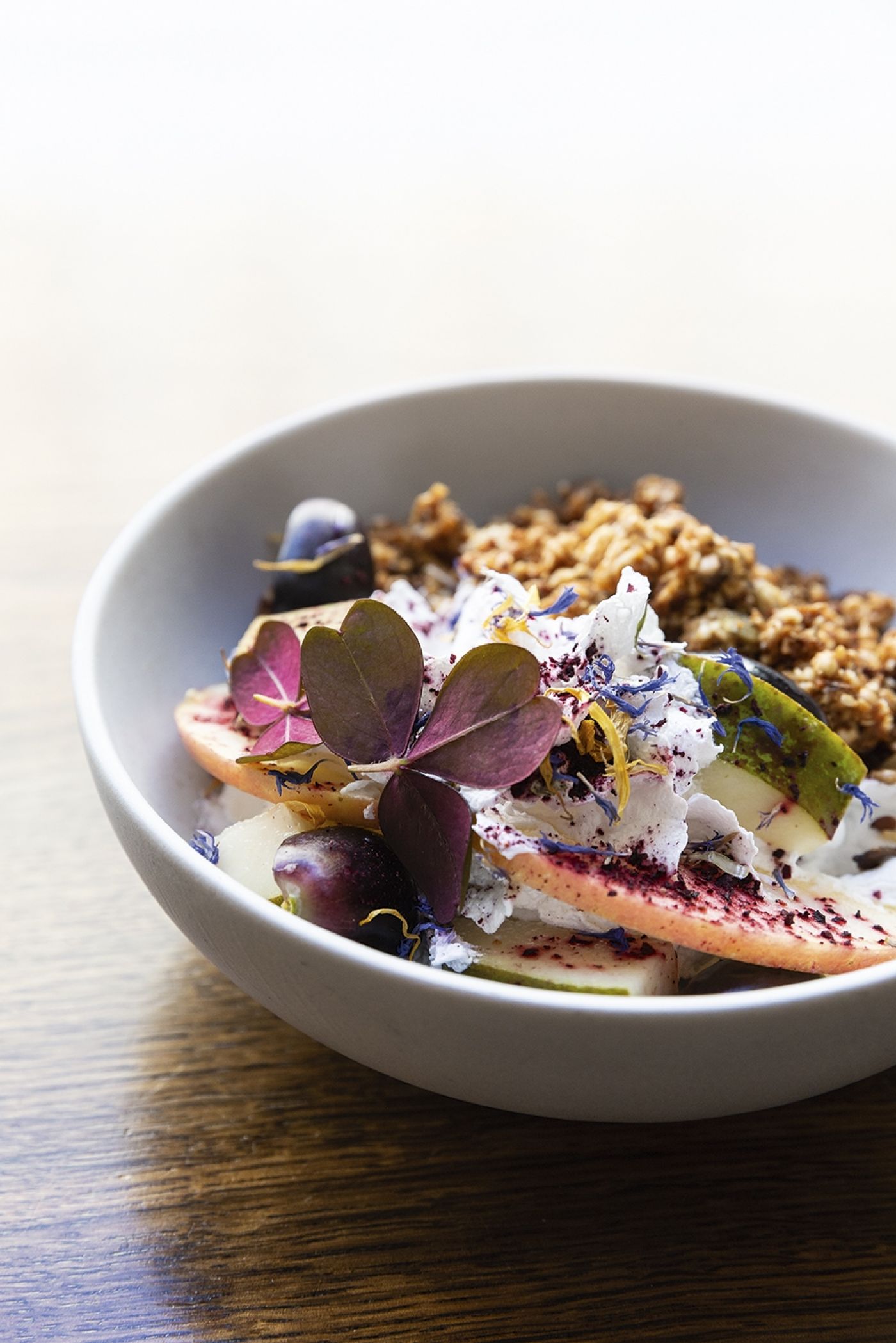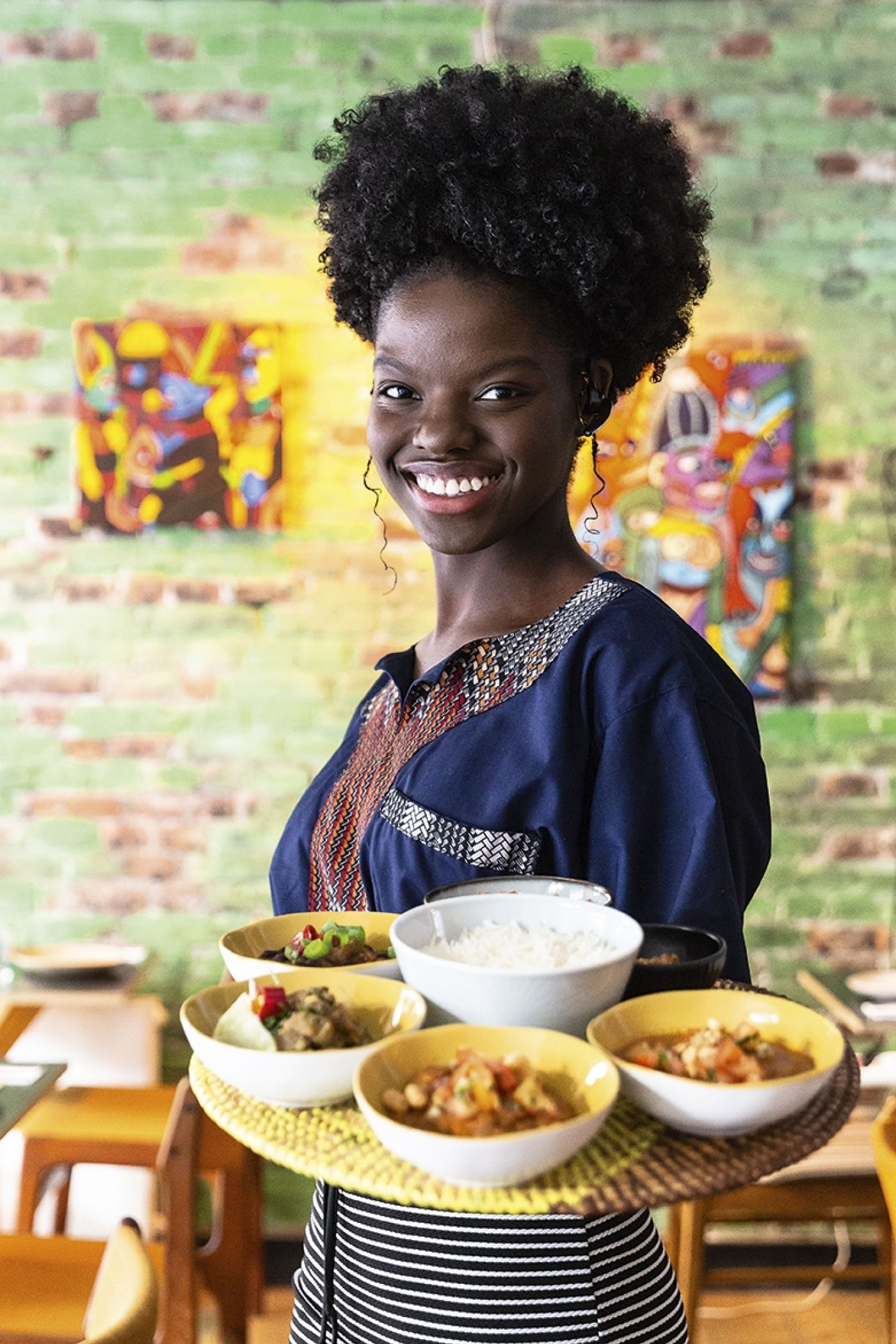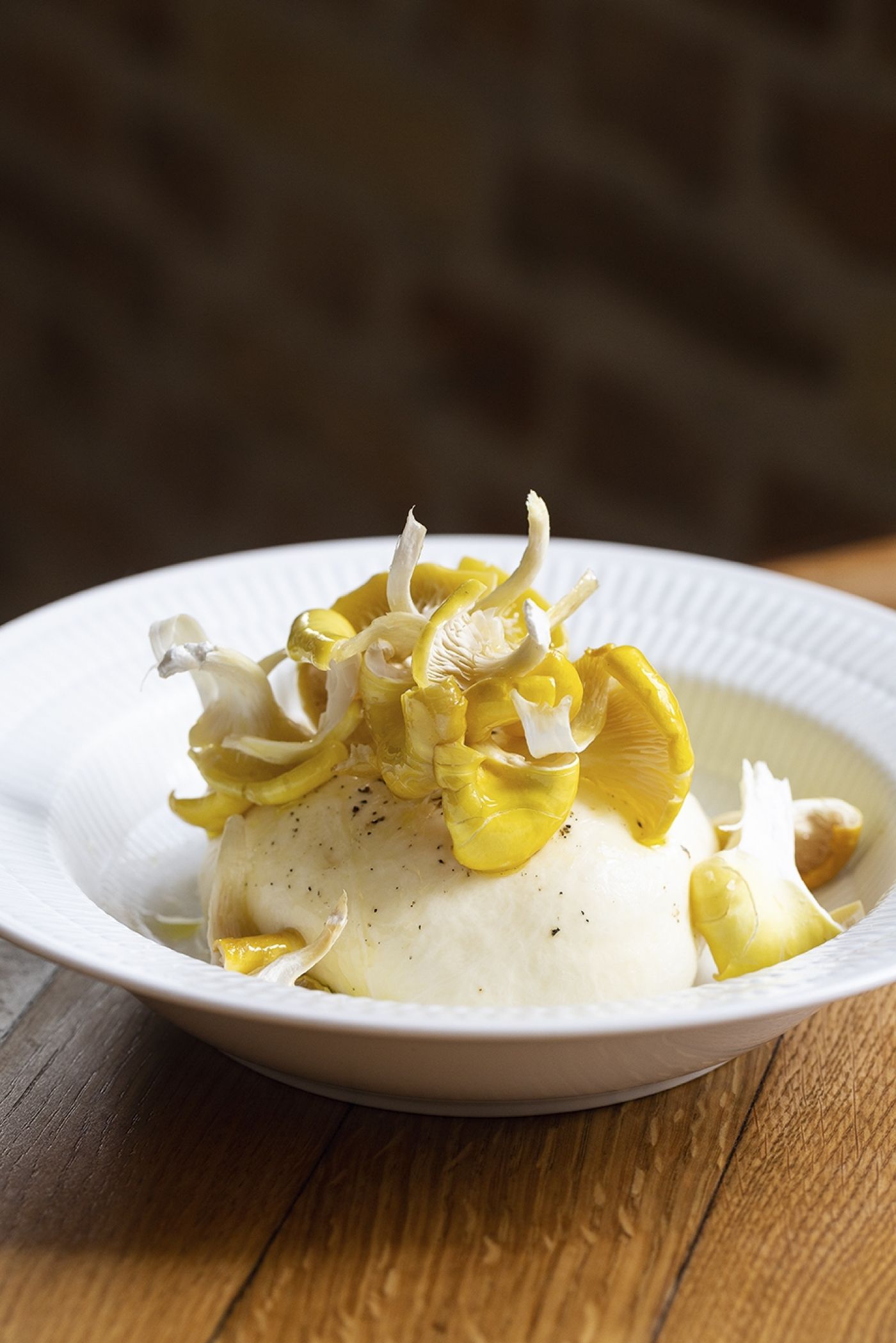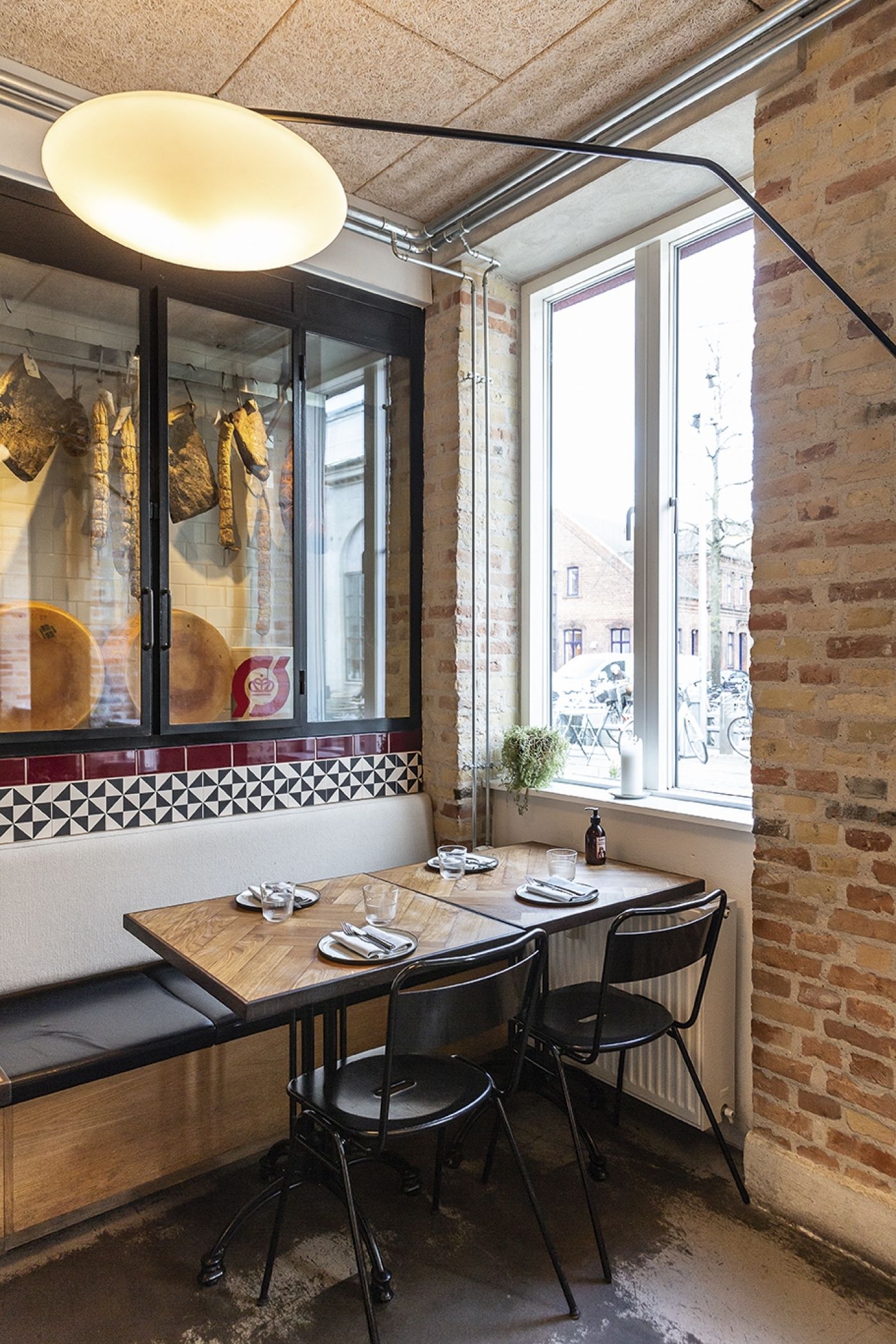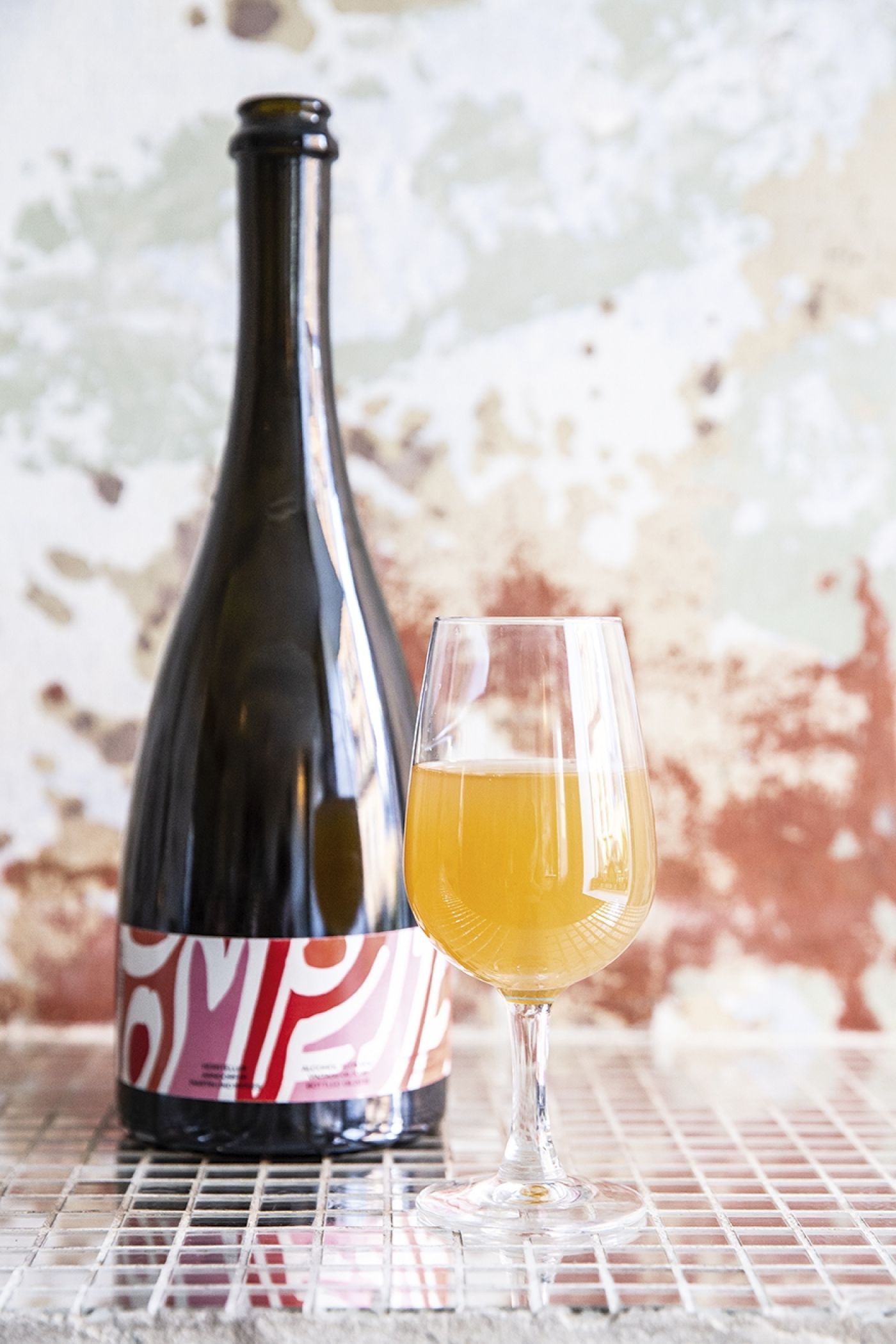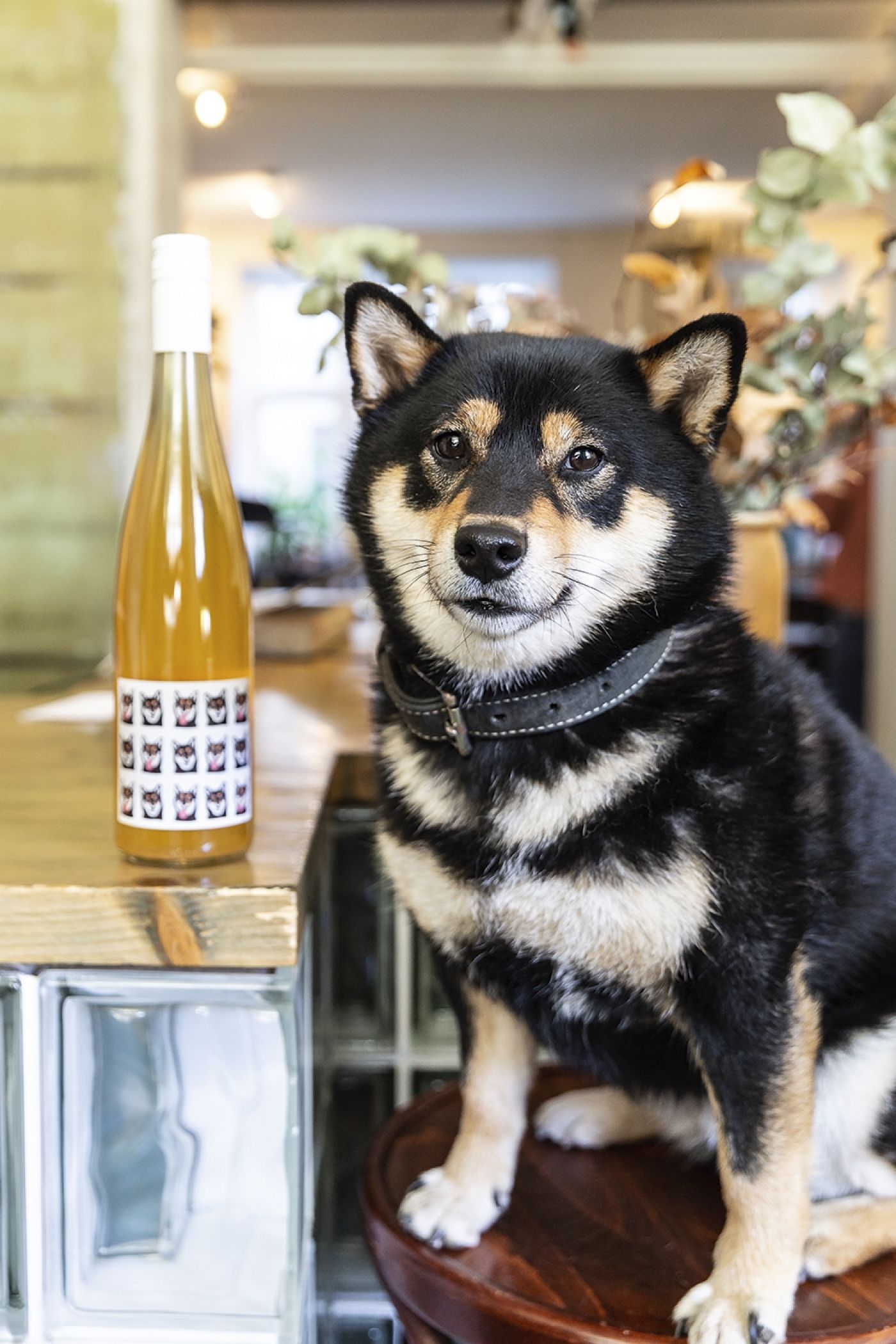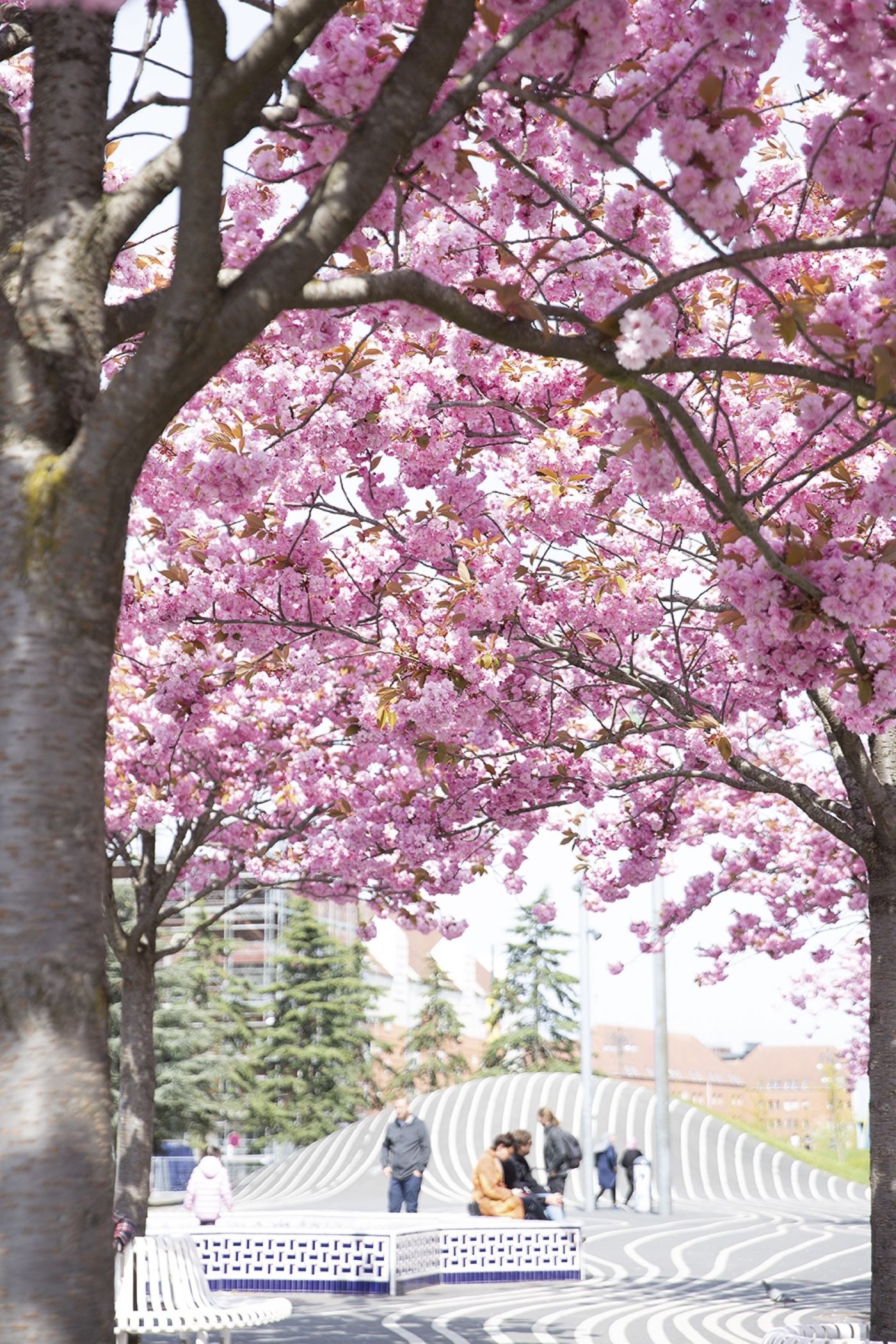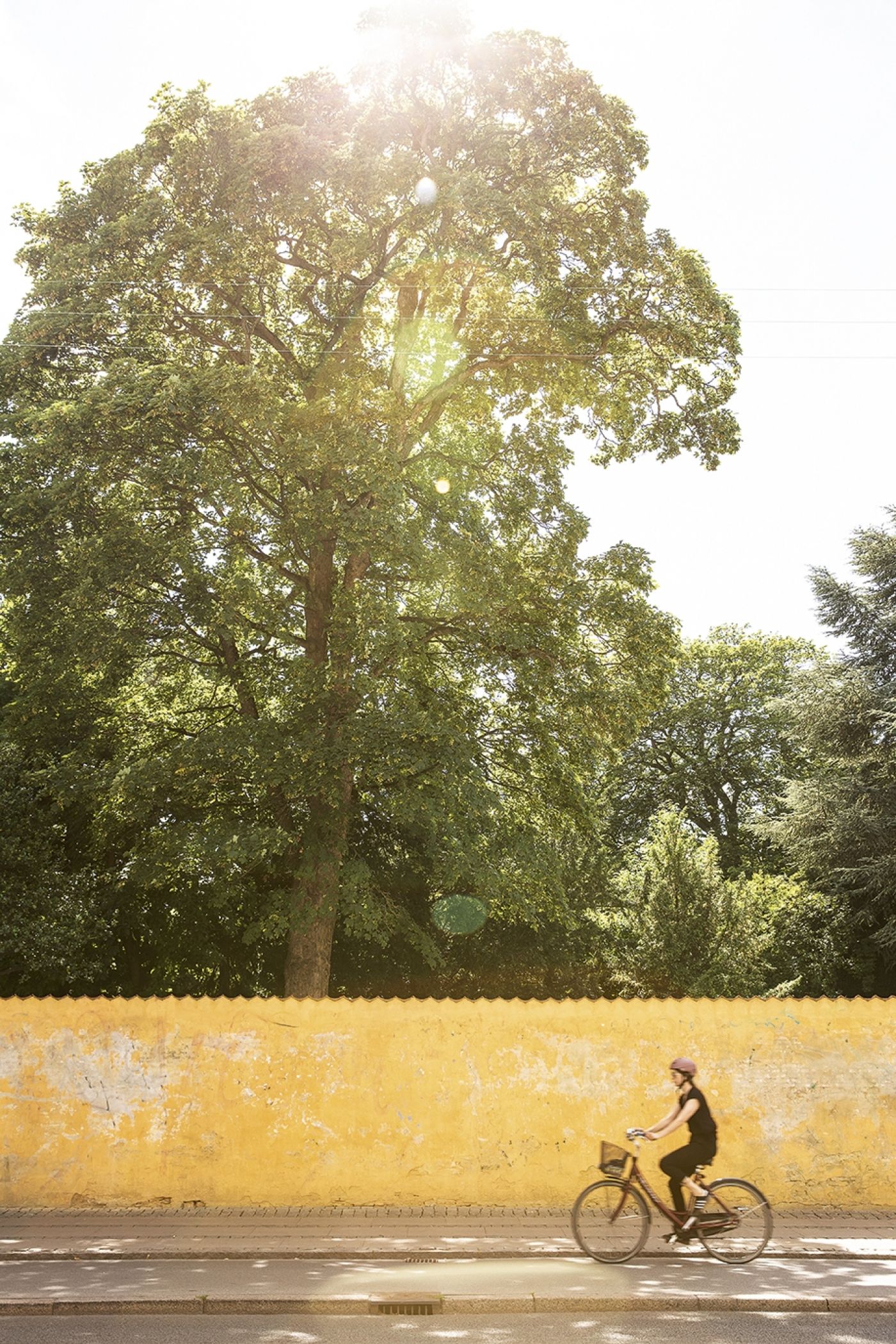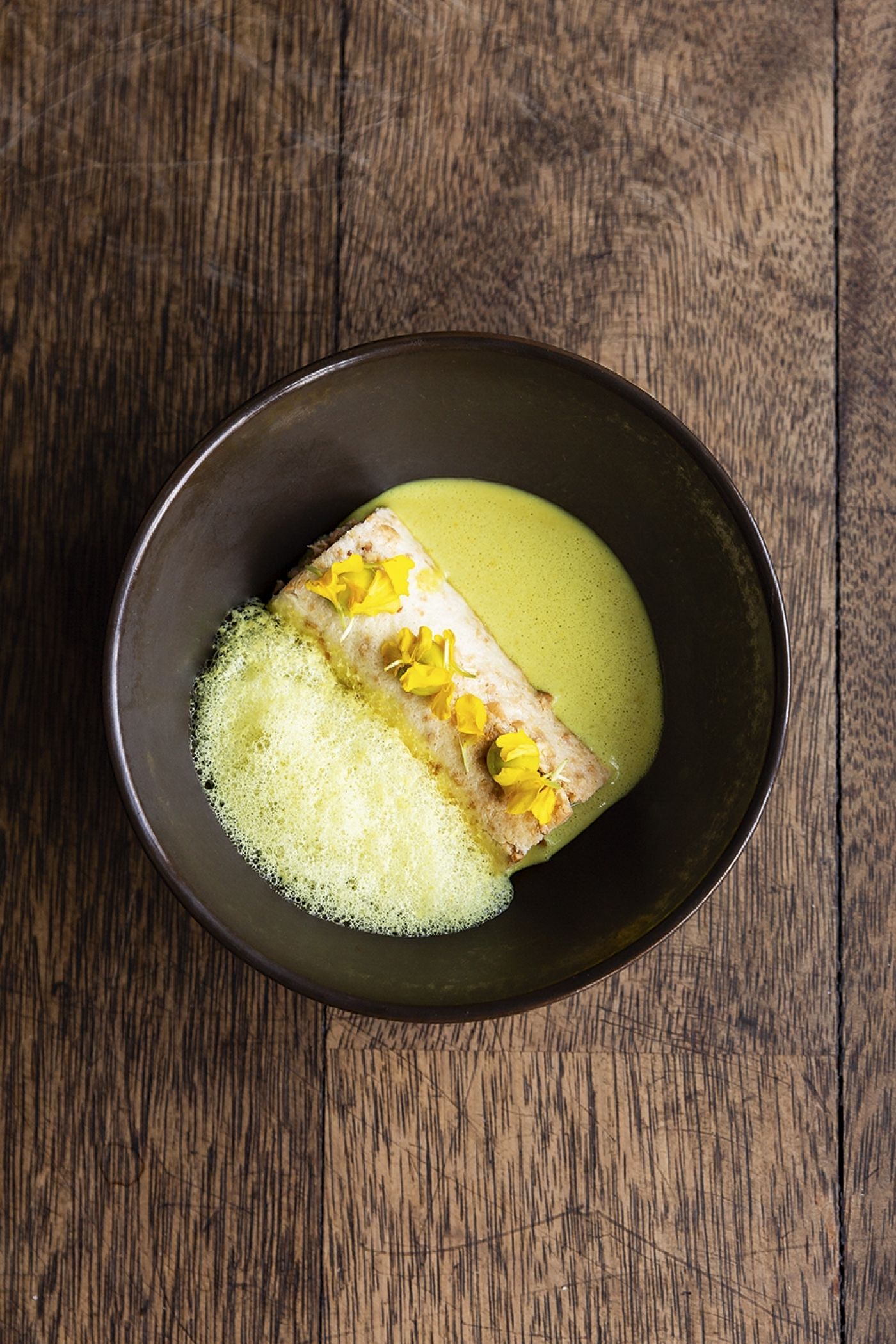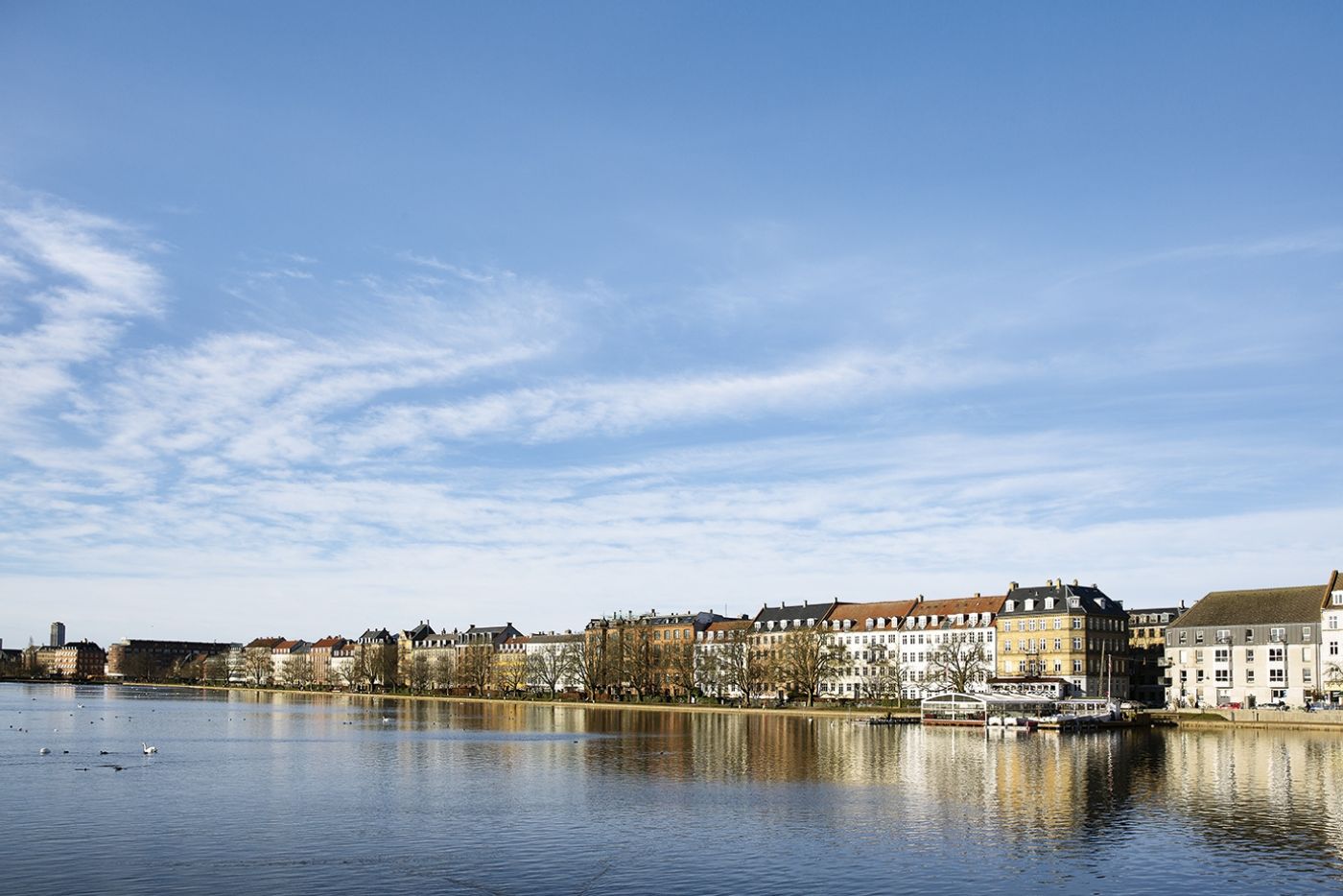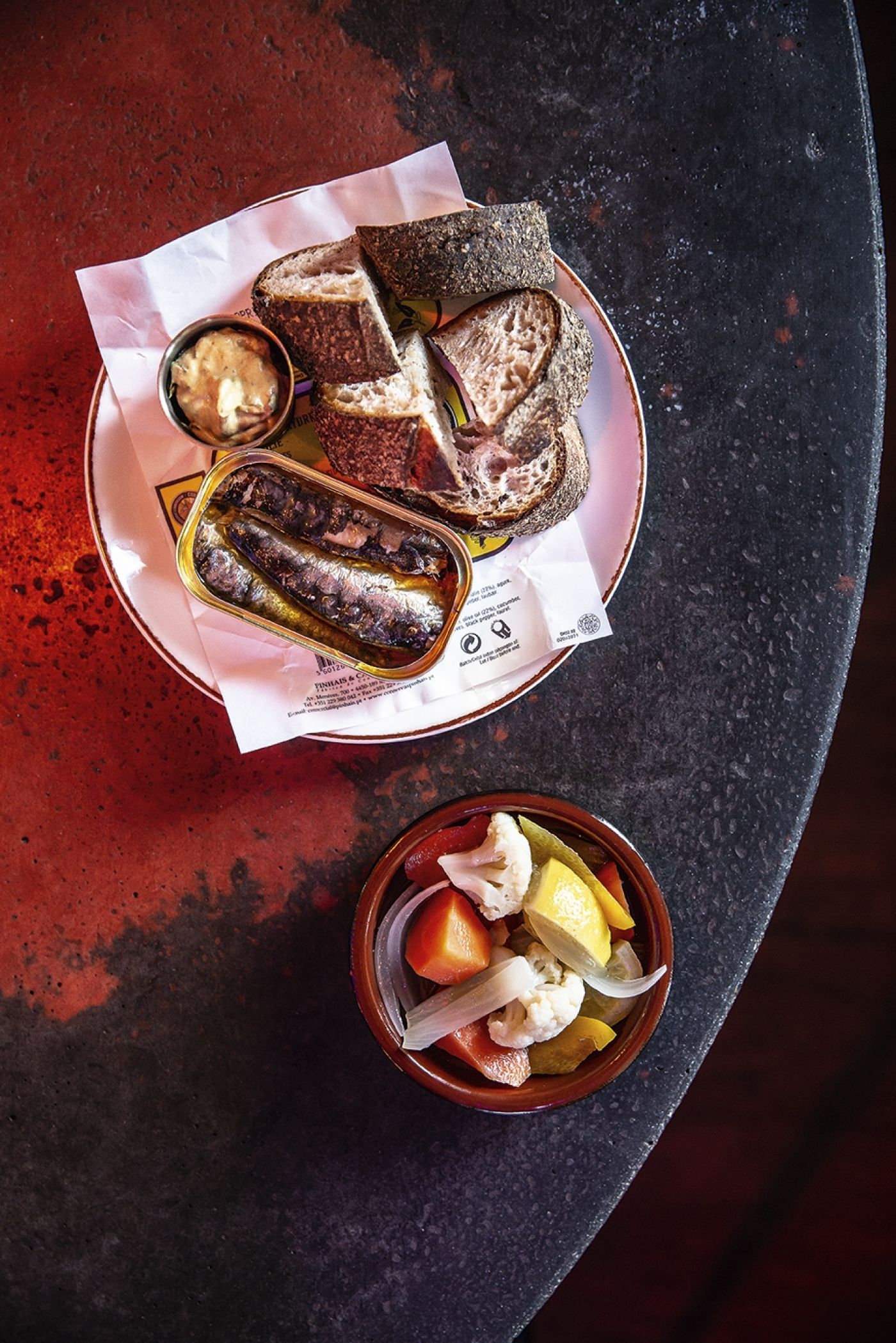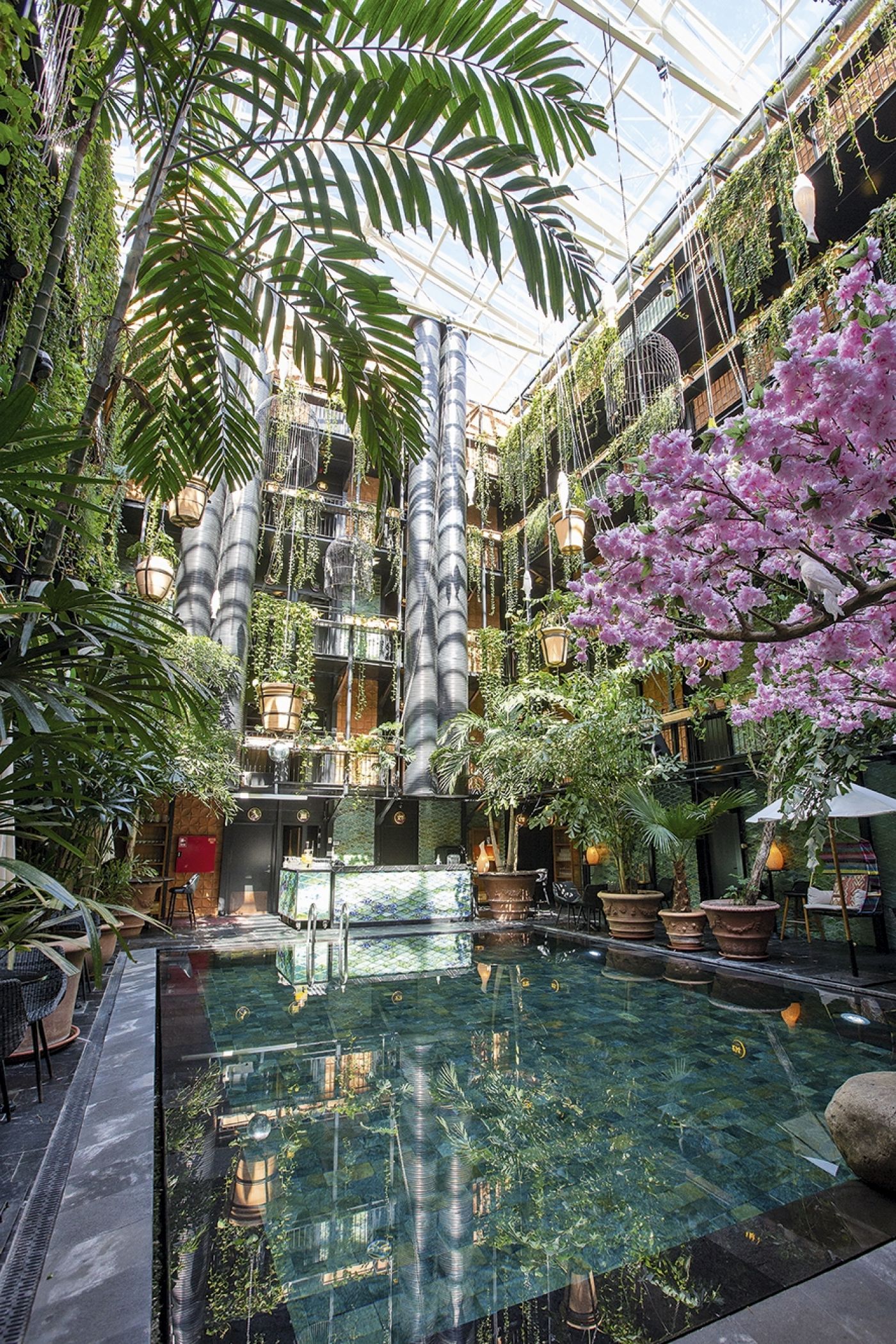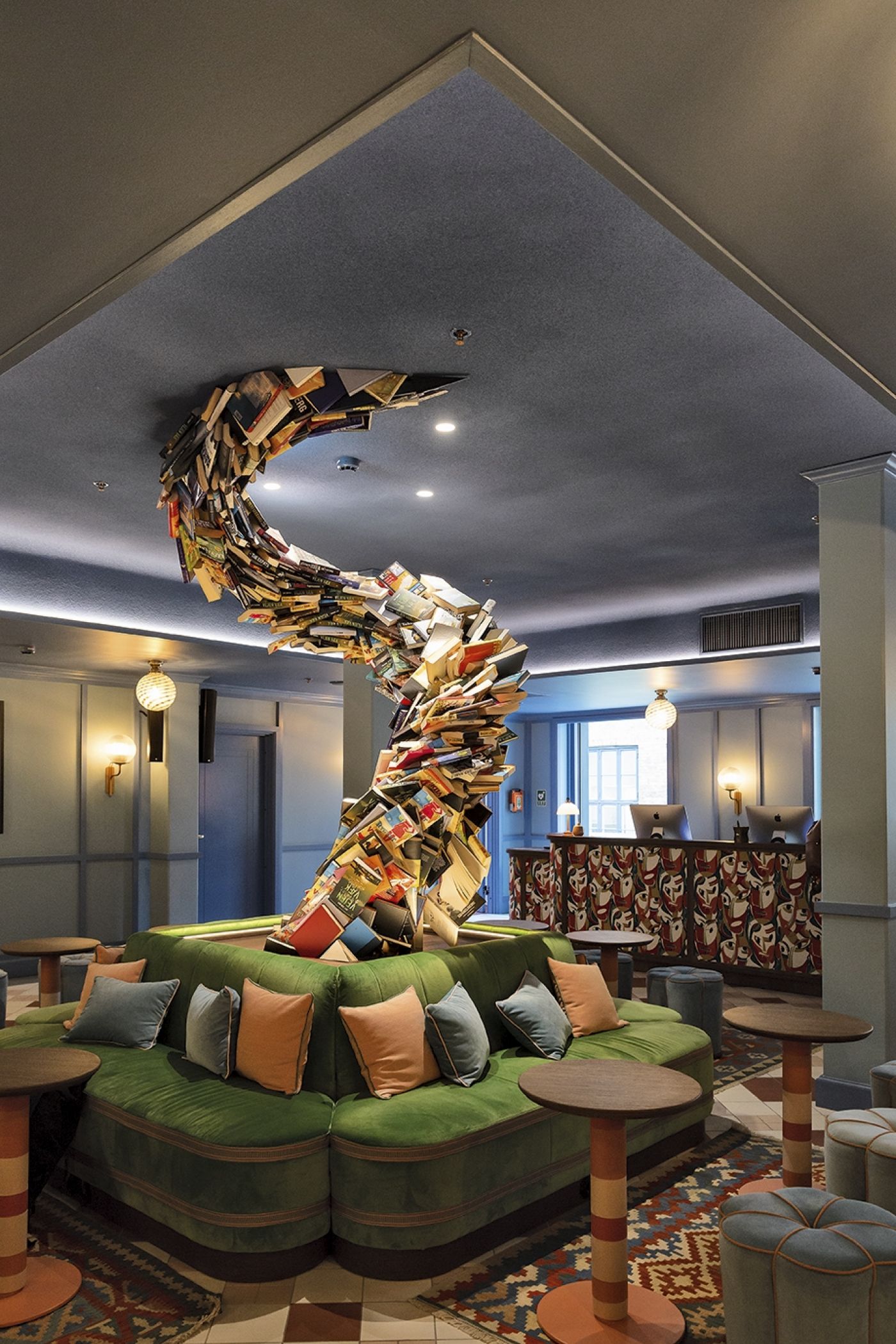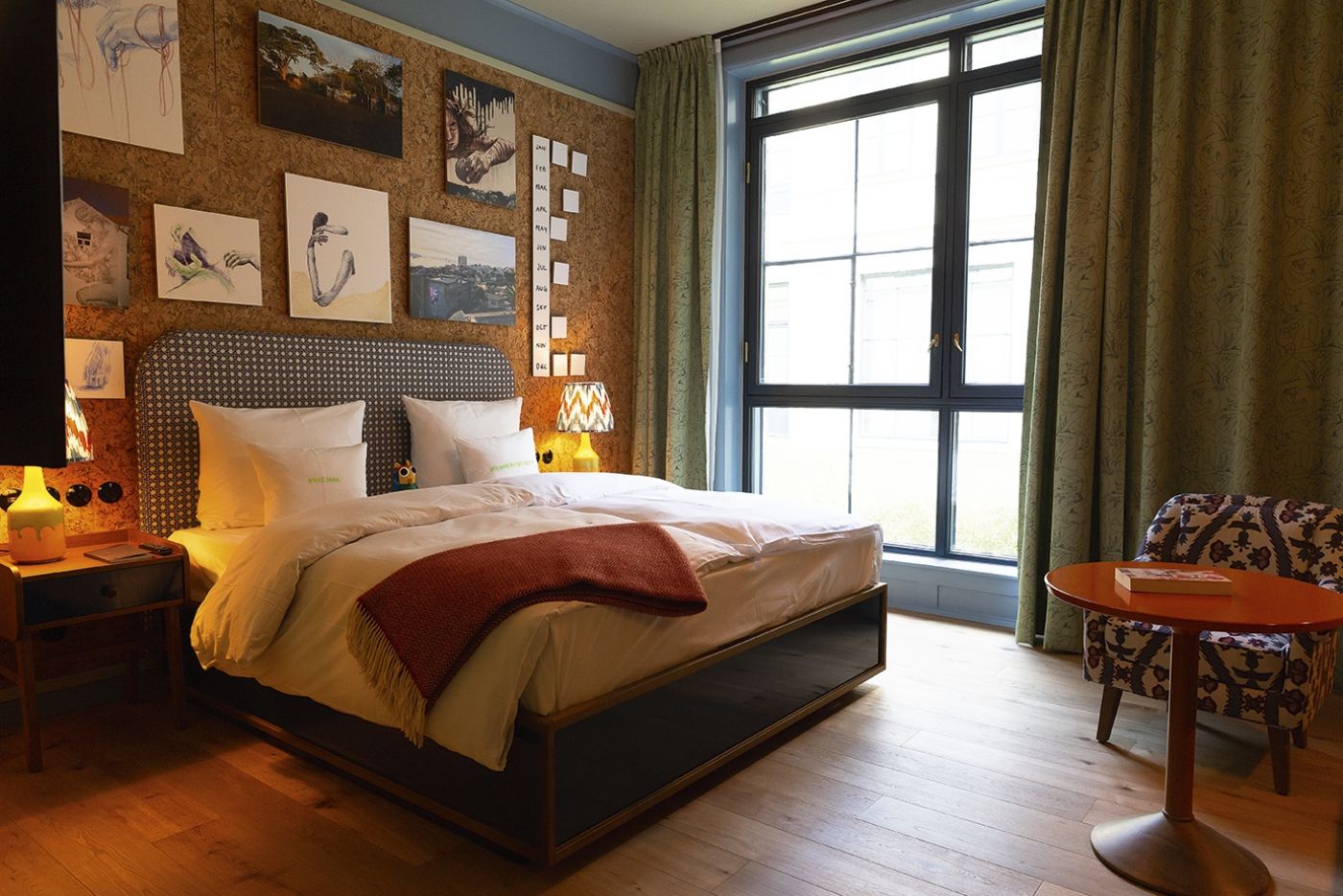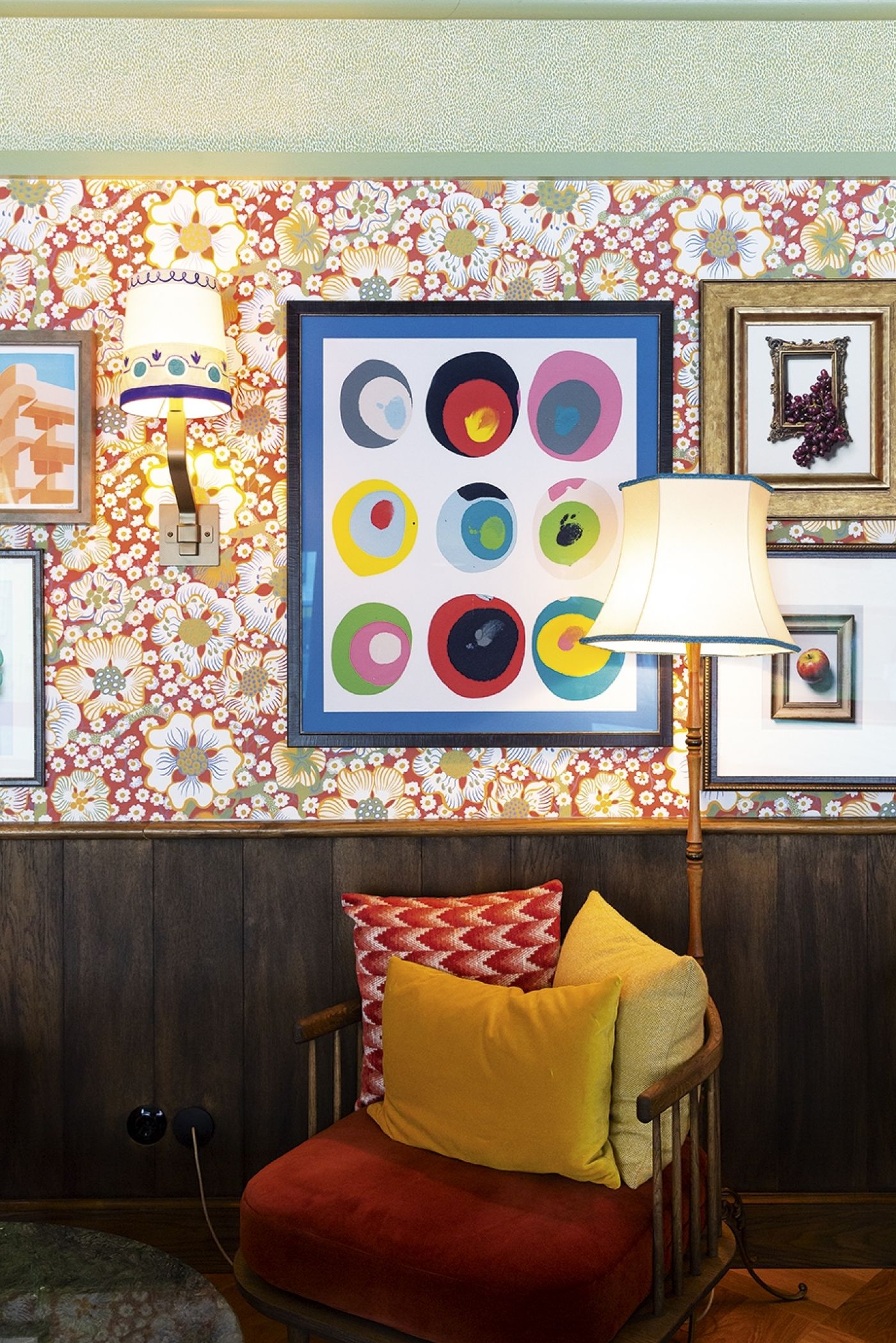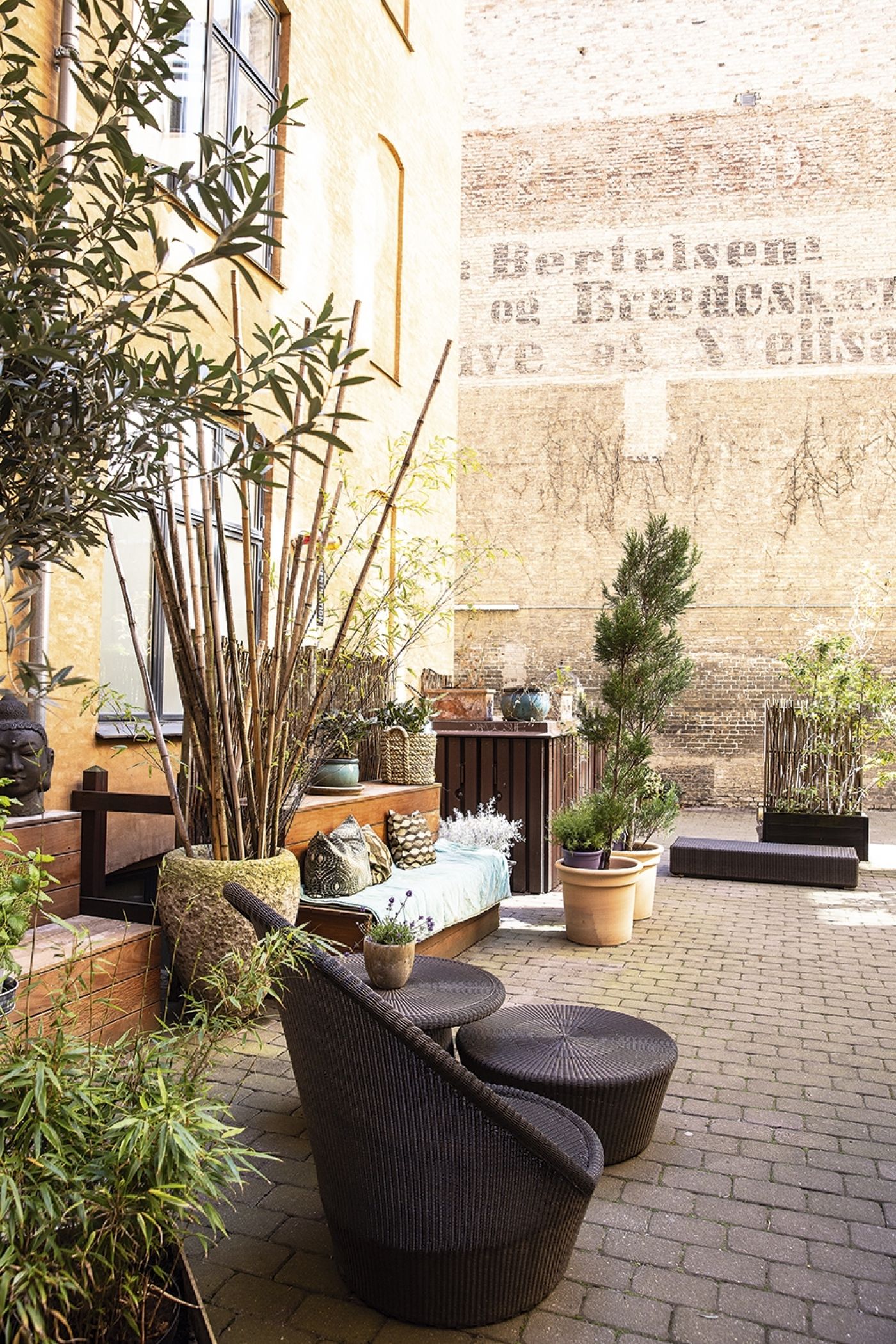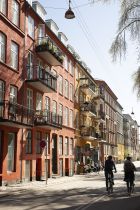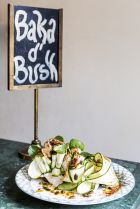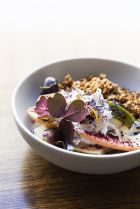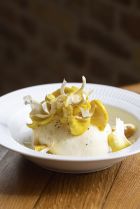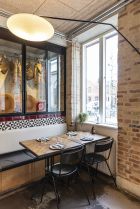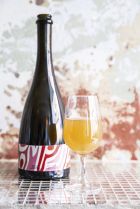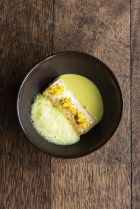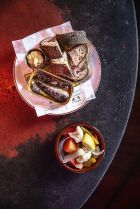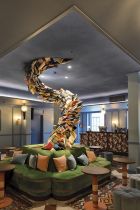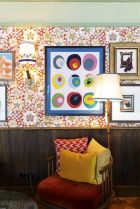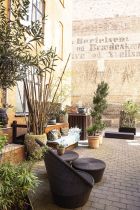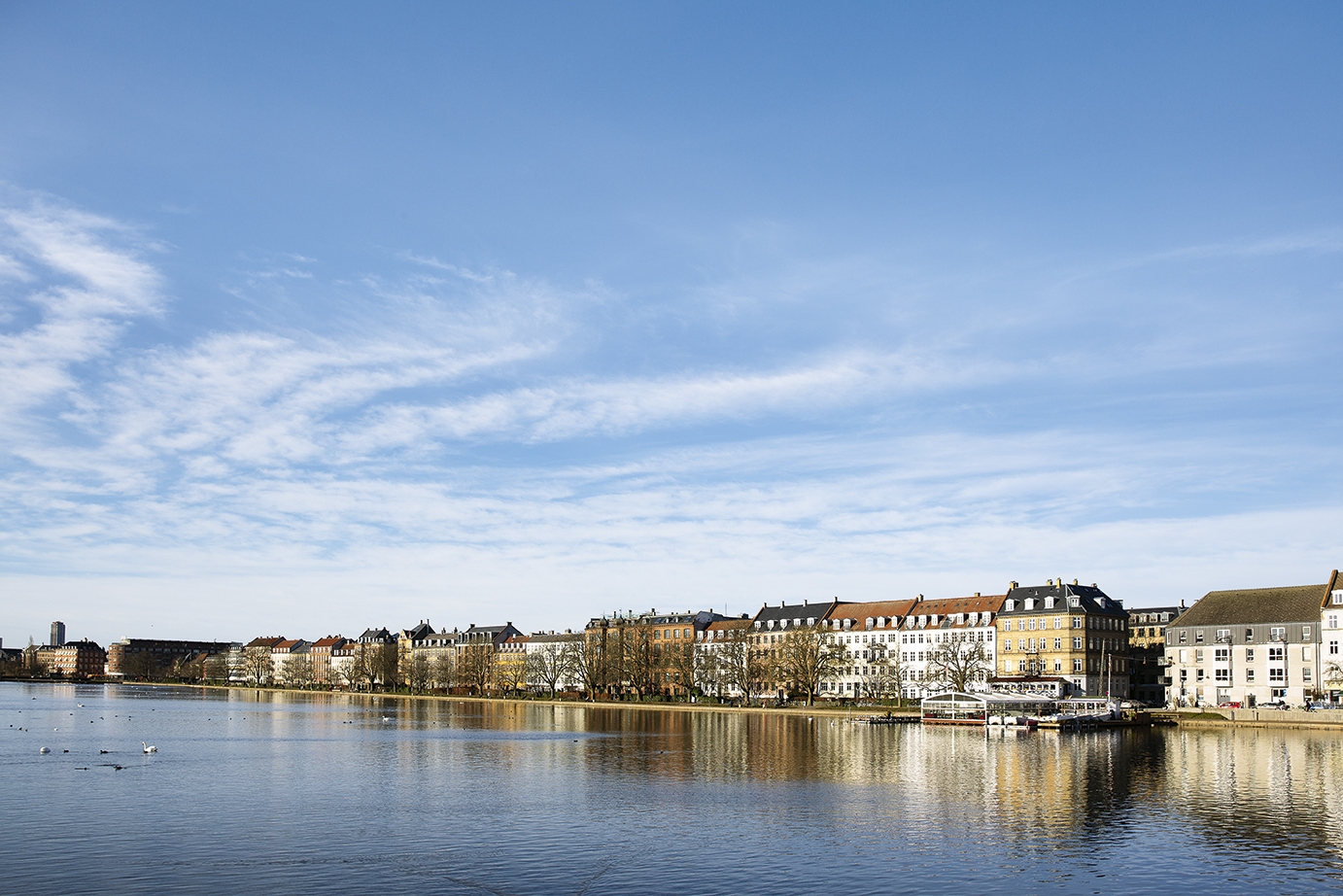
Food and Travel Review
Elsewhere, a cemetery wouldn’t be a natural setting for a picnic. Although at Assistens Kirkegård, Copenhagen’s oasis of tree-lined pathways encompassed by towering yellow walls, picnicking has been a thing since the 19th century. Today, sun-worshippers stretch out on the grass amid the gravestones and tombs, snoozing, chatting, grazing, clinking beers and slurping wine from paper cups. This is the final resting place for thousands of notable Danes including author Hans Christian Andersen, philosopher Søren Kierkegaard and Nobel Prize-winning physicist Niels Bohr. When the sun starts casting shadows in the late afternoon, it’s a location brimming with life.
The cemetery sits in the heart of Nørrebro: a vibrant, diverse and densely populated district bordered to the south-east by Copenhagen’s Lakes. Its youthful energy is palpable, assisted by a dizzying variety of food and drink spots tightly packed into 4sq km. Built on historically working-class roots and an activist past, today it’s gentrified in parts, yet still feels largely unpolished and a little rough around the edges, giving it an air of authenticity and charm.
Don’t be put off by its moniker ‘Nørrebronx’, or by its graffitied walls – behind them lies a welcoming and eclectic neighbourhood with truckloads of community spirit that students and families, professionals and retirees call home. It’s a patchwork of historic and modern architecture, parks and urban spaces, scattered with great places to eat and drink and criss-crossed by bicycle paths and leafy side streets. All combine for a sense of undeniable cool: Time Out crowned it the coolest neighbourhood in the world in 2021.
Dronning Louises Bro (bridge) – crossed by as many as 40,000 bicycles a day and billed as the busiest cycling street in the world – is Nørrebro’s southern gateway, traversing the Lakes and connecting it to the city centre. For several decades, Nørrebrogade, the street that forms Nørrebro’s backbone, has been known as a shawarma hotspot. Jostling for position with places to get your hair cut and phone fixed, a staggering number of kebab and shawarma joints line its 2km length, sometimes nicknamed ‘shawarma mile’. Ask ten locals to name their favourite spot and you’ll get ten different answers; Dürüm Bar is often lauded as one of the best, as is Dürüm Symfoni, where 100kg-plus skewers of halal veal, marinated in lactose-free milk and a secret spice mix, are made fresh in house every day, and gravity-defying discs of house-made dough are tossed ceiling-high to make perfectly crispy-chewy flatbread fresh for every order.
As popular as shawarma continues to be, today it’s far from the only string in Nørrebro’s gastronomic bow. In recent years, this small district has evolved into a full-blown food destination, brimming with variety, from food trucks to Michelin-rated restaurants, and bars specialising in everything from natural wines and craft beers to agave spirits, whisky and vermouth. Food and drink spots are popping up on every side street and the main street, Nørrebrogade, is persistently punctuated with new openings.
Behind a red steel door between a barber and a kebab shop sits Dispensary. Here, Leigh Fitzgerald passes craft beers, cocktails and whiskies from a vast worldwide collection over a 7m-long bar of solid oak. ‘I wanted to make whisky more approachable, so people could come in and try a nice pour that won’t cost them a month’s rent, and take away the stigma that it’s a stuffy, expensive drink.’ As he explains in his soft Irish lilt, he prepares his Old Fashioned, made with a blend of three whiskies – two bourbon and one rye – two types of bitters and a touch of sugar.
The first to bring high-end dining to the district was chef Henrik Yde-Andersen when he, together with partner Lertchai Treetawatchaiwong, opened Kiin Kiin back in 2006. He fell in love with Thai cuisine after holidaying in Krabi in 2000 and then spent five years learning the arts of the authentic Thai kitchen. He returned to Copenhagen, however, at a time when the New Nordic Cuisine movement was taking hold and Thai food wasn’t thought of as high-quality cuisine. ‘Everybody asks why we opened here, but the truth is we had no money,’ says Henrik. ‘I wanted to showcase the fact that Thai food was on a par with the best in the world. As I had a background in both French and Thai cooking, I could mix and match. We called it “modern Thai”, to have the liberty to cook what we want.’ Copenhagen liked what they were offering, and Michelin awarded Kiin Kiin a Rising Star in 2007, followed by a star proper in 2008 – one it’s retained ever since.
With Scandinavia comes quality coffee, so it’s fitting that Coffee Collective became the first mover in Jægersborggade in 2008. Christian Puglisi, previously sous-chef at five-time World’s Best Restaurant Noma, established his debut restaurant Relæ here, together with natural wine bar and bistro Manfreds across the street, bringing a new influx of visitors to the area. Claus Meyer, one of the originators of the New Nordic Cuisine manifesto, opened a bakery and Lasse Skjønning Andersen launched Grød, a café dedicated to all things porridge.
‘At first, people thought the concept was really strange,’ Lasse smiles. ‘But it was strange enough that people were curious and we got a lot of hype because of that.’ His all-day menu includes traditional oat porridge (with topping combinations including apple, roasted almonds and salted caramel sauce), but also dishes Lasse describes as ‘porridge-ish’: congee, dahl and a creamy ‘barleyotto’ with mushrooms and thyme.
Gradually, the street filled with speciality shops, artisans, bars and more eateries, and Jægersborggade evolved into one of the hippest spots in Copenhagen. Today, you can buy anything from saké, cacti, vintage clothes and hand-crafted ceramics to Ugandan street food, caramels and ice cream frozen before your eyes in mixers overflowing like witches’ cauldrons with billowing clouds of liquid nitrogen at Istid. It’s not a gimmick: as pioneered by Heston Blumenthal, the method creates an incredibly smooth finished product After ten successful years on the street, Christian Puglisi chose to shutter Relæ and Manfreds, ending his journey on a high. ‘We came, we saw, (we didn’t use tweezers) and we conquered,’ began his Instagram announcement in late 2020. In those ten years, Relæ had not only been awarded a Michelin star and made it on to The World’s 50 Best Restaurants list, but also became the first Michelinstarred restaurant in the world to be certified organic. His strippeddown approach to fine dining, unwavering focus on sustainability and use of organic produce influenced a generation.
Brus, a large brewpub from To Øl brewery, sits on Guldbergsgade, opposite Bæst, another of Christian’s restaurants. In 2005, To Øl founders Tore Gynther and Tobias Emil Jensen were students at Det Frie Gymnasium, a Nørrebro high school run as a democracy by its students and teachers. Mikkel Borg Bjergsø – who went on to establish the world-famous beer Mikkeller – was a teacher of theirs. The three borrowed the school’s kitchen, turning it into a brewing lab when school was out; alongside his teaching job, Bjergsø founded and built up Mikkeller, eventually switching teaching for full-time beer brewing in 2010; To Øl was born the same year. Today at Brus, To Øl create craft beer of every imaginable style, from IPAs and pilsners to brown ales and stouts, which are brewed in small batches, travelling just a few metres to the taps: beer doesn’t get any fresher than this. People cram shoulder to shoulder along the communal tables outside, chugging beers and grazing on Brus’ famous fermented fries, while across the street sharing plates of Bæst’s charcuterie are washed down with natural wines – another passion of Christian Puglisi.
The pouring of exclusively natural wines at Manfreds has been credited with spawning a whole new wine scene in Copenhagen. Today, it’s one of the biggest destinations in the world for drinking natural wines – those characterised by low intervention both in the vineyard and in the winemaking process – and some winemakers reportedly allocate as much as 90 per cent of their produce to the city.
Gaarden & Gaden, an iconic Nørrebro spot opposite the cemetery’s eastern walls, was likewise founded on natural wines. The pavement tables are packed with people sipping reds, whites and oranges, and sharing seasonal food: crispy and moreish Danish fjordrejer (shrimps from the Danish fjords) tossed in smoked paprika and vinegar powder and dipped into a bright green local ramson mayonnaise, before being eaten whole, heads and all.
Gaarden & Gaden’s owner Thomas Spelling has been involved in the natural wine scene since 2007, when it was a niche world. He explains that Noma serving natural wines was a defining event; it wasn’t the first, but it gave them credibility. ‘Manfreds was a very important place too,’ he says. ‘It was the first place with a big selection of only natural wines, from very radical and fundamentalist producers. It was a whole new world that just opened.’
A short walk from the cemetery lies Rantzausgade, another of Nørrebro’s hubs that has seen a flurry of openings. Walking through the pink-and-purple striped door
that marks the narrow entrance to restaurant Baka d’Busk takes you down a rabbit hole to a lively world filled with walls of coloured glass, vintage mismatched plates, kitsch ceramics – and great food that just happens not to include any meat or fish. It’s run by six Danish men who call themselves the Plantedrenge: the Plant Boys. With a range of backgrounds in restaurants, bars and cooking for the Danish cycling team, the team are not vegans or vegetarians themselves, but their mission is simply to make plant-based meals that everyone will love. ‘We want people to come because the food is good. We’re not into converting people,’ says chef Jonathan Zeuthen Knoll. The dishes they produce are inventive and good-looking, without being fussy. ‘A radish still looks like a radish. We use simple cooking methods and we don’t do a lot of processing to the food,’ he explains.
The boys’ sense of fun is infectious, and they seem to know everyone – locals hop off their bicycles and chat in the doorway and their new neighbours have quickly become friends. Jonathan Tam, head chef and owner of Jatak across the street, smiles as he recounts an evening after he opened in 2022, when the Plantedrenge arrived during service with a tray of shots for his team and guests. ‘It was fun and everyone appreciated it,’ he laughs.
Jatak itself (meaning ‘yes, chef’ if you work in a Danish kitchen) has received a lot of attention. Tam came to Denmark from Canada to do a stage at Noma, and later returned to work for Christian Puglisi at Relæ, where he finished up as head chef. After Relæ closed, it was time to do his own thing. Along with his architect partner Sarah, he spent 2021 transforming what had been a cocktail bar into an intimate, minimalistic yet cosy space with 20 seats in the dining room and eight more at the kitchen counter. It’s here that Tam produces dishes with elements of inspiration from his Chinese and Vietnamese roots and from his international team.
When Christian Puglisi and Noma chef-owner René Redzepi paid a visit, they posted about the experience on social media using an image of a slice of Tam’s egg tart. René wrote: ‘This place is gonna go ballistic. You should book now.’ The people listened: Jatak was immediately booked solid for several months. ‘We had a Friday night with 900 people on the waiting list. It was crazy,’ Tam remembers. The egg tart has gone on to become a legend. ‘It’s the finisher – it’s kind of like our mic drop. It’s satisfying, and if it’s done well, it can be just as innovative as a modern dessert.’ The silky-soft egg custard sits on a flaky crust made with pork fat, topped with a shiny poppy seed and black tea glaze.
Jægersborggade – the street that was a catalyst for the Nørrebro food evolution and continues to flourish – is home to a proponent of food with health benefits: The Sixteen Twelve. Their next-level brunch dishes incorporate a variety of fermented, pickled and live ingredients. Portions are generous and the presentation has wow factor: the French toast comes as an impressive stack of twice-cooked brioche, honeycomb and house-made live probiotic coconut yoghurt, with rhubarb butter, salt-roasted coconut and berries. A plate of not-just-your-average smashed avocado comes with goats’ cheese, a startlingly bright yellow turmeric-pickled egg, house-fermented hot sauce and ‘activated’ almonds... Activated, you ask? ‘You take dried almonds, soak them in water to encourage the nut’s sprouting process and release the nutrients, then you dry them again… It makes them easier to digest,’ explains manager Gareth Espindola.
Coffee Collective is still here and the team has founded Collective Bakery with the intention of producing pastries at the same high standards as their coffee. Their lemon wave is an ingenious invention: offcuts trimmed from their croissant dough are threaded on to wooden skewers, baked and then brushed with a homemade lemon syrup and brown butter; the resulting little acidic kick pairs perfectly with the coffee.
In Nørrebro there are excuses for conversation and socialising on every corner. In a district where a cemetery, or even the pavement, can make the perfect base when the sun shines, in the late afternoon benches, walls and the eastern side of Dronning Louises Bro are lined with people, sitting next to randomly parked bicycles whose riders’ faces are tipped towards the early evening rays. Beer and wine flows; laughter and tunes mingle in the air. In typical Nørrebro style, it’s a no-frills affair, but with plenty of good summer vibes and plenty of that now internationally-famous Danish hygge. And, like the cemetery, it’s buzzing with life
Words and photography by Sarah Coghill.
Where to stay
25hours Hotel Indre By This well-regarded international brand for citybreak hotels, within walking distance of Nørrebro, is in a refurbished 19th-century building that once housed a porcelain factory and later a university. Rooms come in three sizes (pick Medium for best value) and the stand-out lobby bar has a towering glass roof. Doubles from £247. Pilestræde 65, 00 45 70 770707, 25hours-hotels.com
Hotel Kong Arthur A classic hotel with an impressive fresh renovation, very close to the Lakes and Dronning Louises Bro. Rooms are bright and airy with modern decor and statement parquet floors. Doubles from £213. Nørre Søgade 11, 00 45 3345 7722, arthurhotels.com
Manon Les Suites Right in the heart of Copenhagen, also by the Lakes, this adults-only hotel comes with bohemian luxury that includes a Bali-inspired tropical indoor pool and stellar restaurant and bar, and there’s a sustainable ethos to the entire operation. From £236. Gyldenløvesgade 19, 00 45 4570 0015, guldsmedenhotels.com
Travel Information
The Danish capital sits across the two islands of Zealand and Amager, and the vibrant Nørrebro neighbourhood sits in the north-west of the city’s centre. Copenhagen is one hour ahead of GMT, currency is the Danish Krone and direct flights to Copenhagen Airport, Kastrup take around two hours.
GETTING THERE
Norwegian offers flights direct from London Gatwick and Edinburgh all year round and seasonally from Manchester. norwegian.com
Scandinavian Airlines (SAS) fly from London Heathrow, Birmingham and Manchester all year round. flysas.com
GETTING AROUND
Copenhagen Card provides unlimited trips on public transport, including to and from the airport, plus free access to over 80 city attractions. From £54 for one adult, two children. copenhagencard.com
Cycling is an easy way to explore the city and bike rentals are easy to find.
RESOURCES
Visit Copenhagen is the official tourism board, full of information and inspiration for your getaway. visitcopenhagen.com
Where to eat
Prices are for a three-course meal per person, excluding drinks, unless stated
Bæst Top-notch artisan pizza from world-renowned chef Christian Puglisi, with interesting sides and homemade charcuterie alongside. Pizza from £16. Guldbergsgade 29, 00 45 3535 0463, baest.dk
Baka d’Busk Funky, vegetarian/vegan spot run by the Plant Boys, set in kitsch
surrounds – expect mismatched crockery with unusual ceramics. From £45.
Rantzausgade 44, 00 45 3152 2217, bakabistro.dk
Brus Beer bar with excellent snacks, plus larger plates – don’t miss the fermented
fries. Fries £7.70. Guldbergsgade 29F, 0045 7522 2200, tapperietbrus.dk
Dürüm Symfoni Considered one of the best shawarma in Copenhagen and
great value, with house-made flatbreads grilled to order. Doner kebab from
£7.60. Nørrebrogade 104, 00 45 6110 2337
Gaarden & Gaden Bistro offering the likes of oysters and terrine by day and an
evening à la carte or five-course Med-inspired tasting menu, backed by natural wines. Five-course menu £44pp. Nørrebrogade 88, 00 45 5555 0880, gaaga.dk
Grød All-day spot for porridge and ‘porridge-ish’ dishes such as barleyotto. Porridge from £5.30. Jægersborggade 50, 00 45 5058 5579, groed.com
Jatak Michelin-starred Chinese/Vietnamese-inspired newcomer offering two different tasting menus, with the 11-course version served at the kitchen counter. Eight-course menu £115pp. Rantzausgade 39, jatakcph.com
Kiin Kiin Tasting menu-only Thai fine-diner – expect dishes like flan with miso and dancing fish flakes, and pandan matcha ice cream, financier, choux, pandan custard. Seven courses £145pp. Guldbergsgade 21, 00 45 3535 7555, kiin.dk
Sasaa Cool Pan-African joint taking diners on a journey through culture – think iconic jollof rice, chicken peanut stew and chakalaka. Ten-plate tasting menu £26pp. Blågårdsgade 2A, 00 45 50 22 47 91, sasaa.dk
Silberbauers Bistro Cosy ProvenÇal-leaning bistro with a daily-changing menu. The focus is on fish and seafood, but French classics like beef tartare and onglet are present and accounted for. From £37, excluding drinks. Jægersborggade 40, 00 45 3696 6593, silberbauers.dk
The Sixteen Twelve Ultimate health-forward brunch spot serving twists on
the usual – avo on toast with goats’ cheese, hazelnut polenta porridge with
rosemary plum coulis et al. It all incorporates pickled, fermented and live
ingredients. Brunch dishes from £11. Jægersborggade 8, sixteentwelve.dk
Food Glossary
Get Premium access to all the latest content online
Subscribe and view full print editions online... Subscribe

